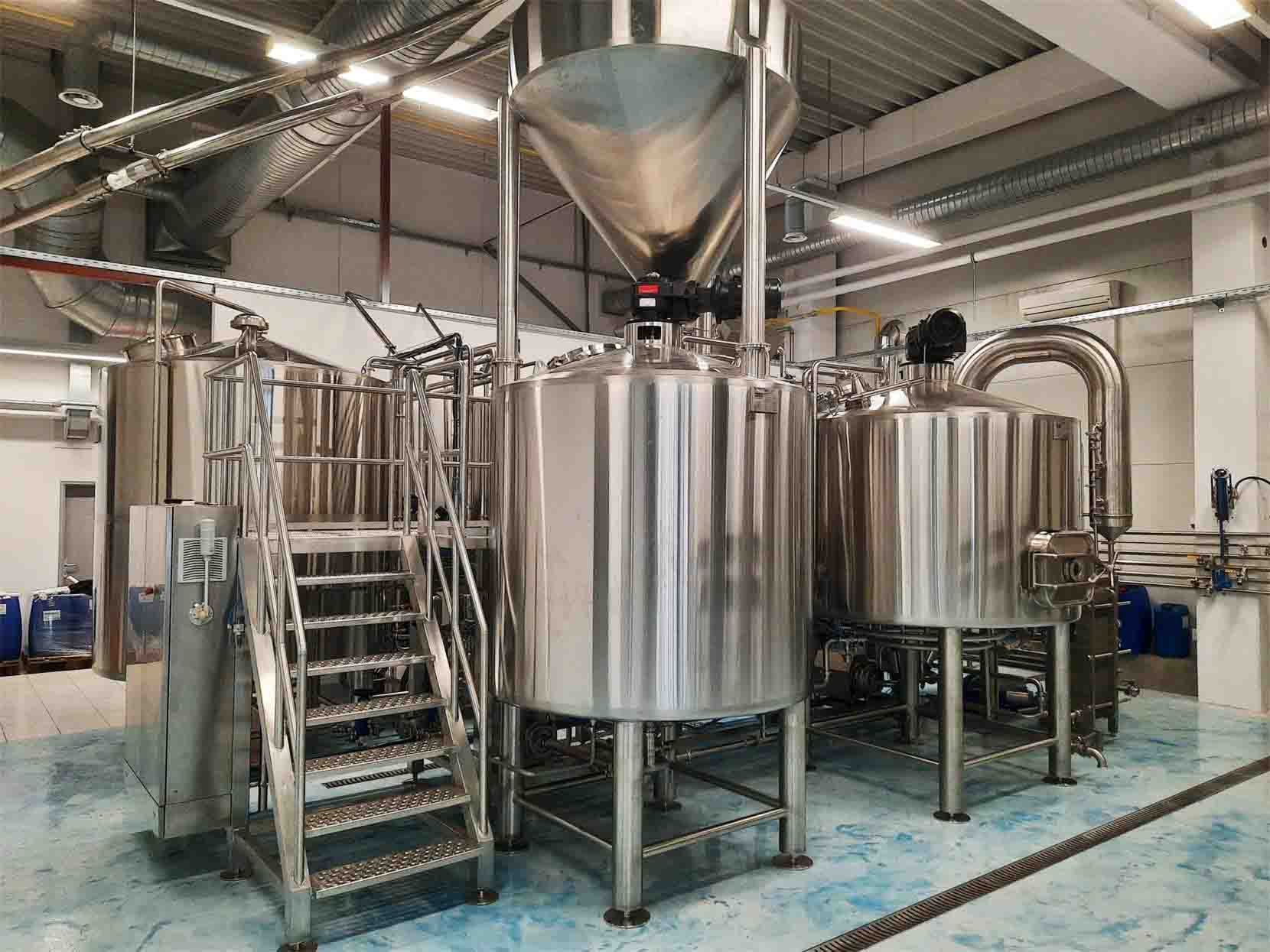How Fermentation Tanks Work
Types of Fermentation Tanks
Now, not all fermentation tanks are created equal. Depending on what you’re fermenting and how you want to do it, there are several options to choose from. Each type brings its own perks and quirks.
Cylindroconical Tanks: These are the workhorses of the brewing industry. With a cone-shaped bottom and cylindrical top, they allow easy separation of yeast and trub. They’re excellent for both primary and secondary fermentation and are often jacketed for precise temperature control.
Open Fermentation Tanks: As the name suggests, these tanks are open at the top. They’re ideal for traditional styles like Bavarian hefeweizens or English ales. The open surface allows certain yeasts to interact with the air, adding depth and complexity. But they require a super clean environment—think lab-level hygiene.
Unitanks (Universal Tanks): These are a kind of all-in-one solution. They can handle fermentation, conditioning, carbonation, and even serve as a brite tank. Great for small to mid-size breweries that need versatility.
Horizontal Tanks: These tanks are used when space is limited or to achieve different yeast behaviors due to reduced hydrostatic pressure. Popular in lager production, they can yield cleaner, crisper beers.
Plastic or Glass Carboys: Homebrewers love these. They’re small, transparent, and relatively cheap. But they lack the insulation and pressure regulation of commercial stainless-steel tanks.
Each type of tank comes with its own pros and cons. Cylindroconical tanks, for instance, are better at separating yeast compared to flat-bottom tanks. But they’re also heavier and more expensive.
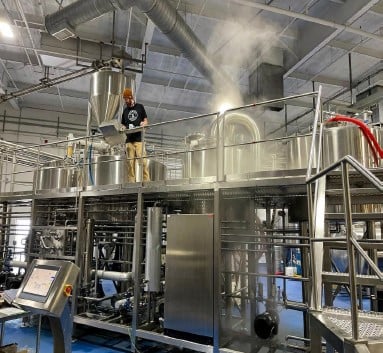
Applications of Fermentation Tanks
Fermentation tanks aren’t just for brewing beer—though that’s where they shine most brightly. They play a starring role in a range of food and beverage applications:
Breweries: This is their natural habitat. Whether it’s a pilsner or a stout, every brew passes through a fermentation tank where yeast turns wort into alcohol and CO2.
Wineries: Grapes go in, and with the help of wild or cultivated yeast, wine comes out. Fermentation tanks for wine may include open-top designs to allow manual punch-downs of the cap.
Kombucha Production: These tanks often include spigots for easy bottling, and may have modified lids for oxygen exchange while keeping contaminants out.
Distilleries: Fermentation is a crucial first step in spirits production. The mash must ferment before it can be distilled into whiskey, vodka, or rum.
Food Industry: Think yogurt, sauerkraut, pickles, kimchi, and soy sauce. Controlled fermentation tanks help produce consistent flavor, texture, and shelf-stable food items.
So whether you’re sipping a craft IPA or enjoying some tangy kimchi on your rice, chances are a fermentation tank made it all possible.
How Does a Fermentation Tank Work?
| Component | Function | Details |
|---|---|---|
| Tank Body | Holds the wort or mash | Typically made of stainless steel for hygiene and durability |
| Cooling Jacket | Regulates temperature | Uses glycol or cold water to maintain optimal yeast activity |
| Airlock/Valve | Releases gas | Prevents oxygen entry while allowing CO2 to escape during fermentation |
| Sampling Valve | Allows quality checks | Lets brewers take samples without contamination |
| Cone Bottom (if present) | Collects sediment | Yeast and trub settle here for easy removal |
| CIP Spray Ball | Cleaning in place | Sprays cleaning solution internally without disassembly |
| Thermowell | Monitors internal temperature | Integrates with temperature sensors for automated control |
Each part works together to create an environment where yeast or bacteria can do their job without interference. If you’ve ever baked bread and watched dough rise, imagine that—but on an industrial scale and with a lot more science involved.


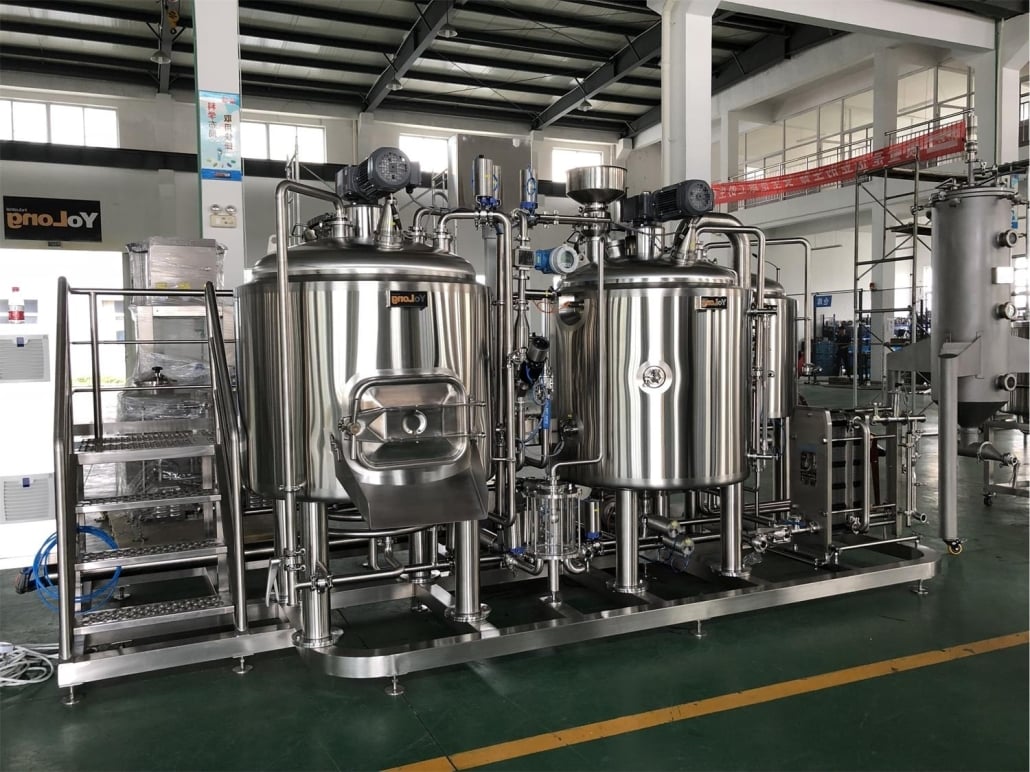
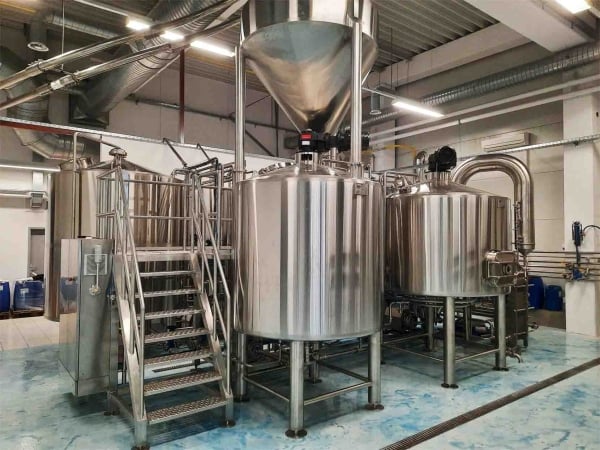
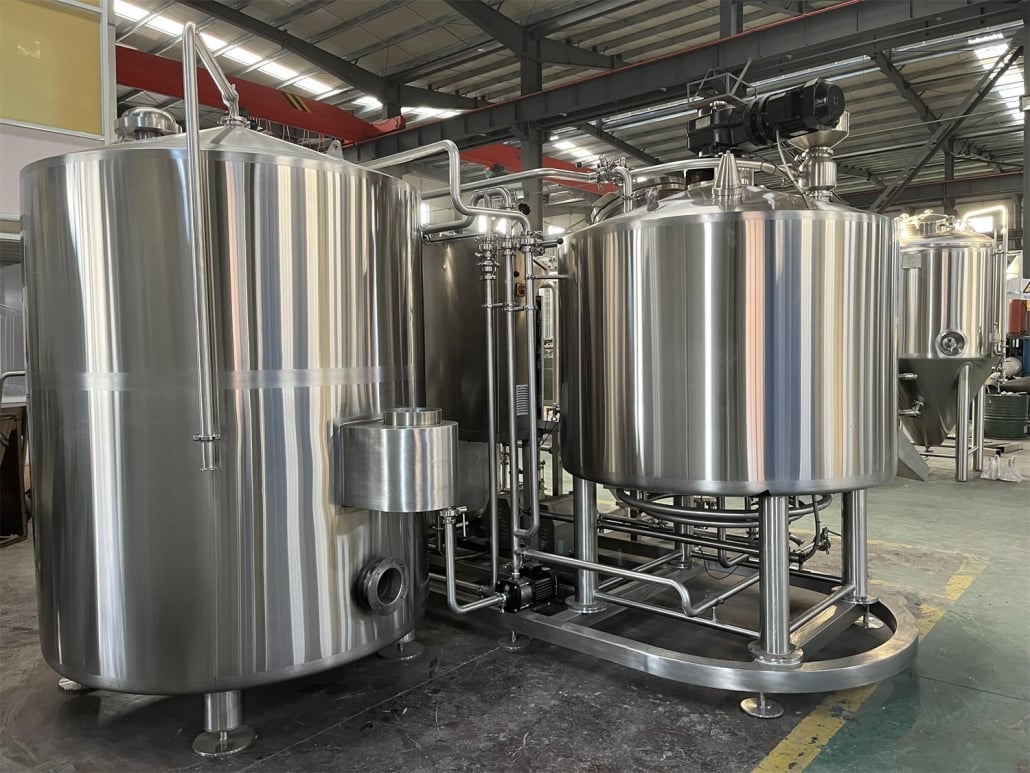
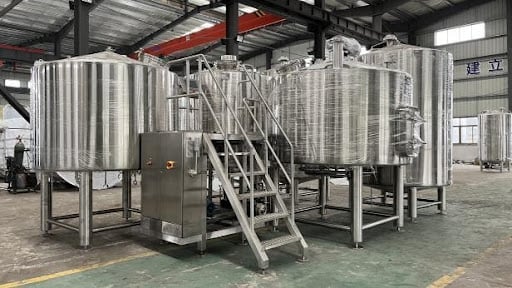
Choosing the Right Fermentation Tank
So, you’re looking to invest in a fermentation tank. Great choice. But where do you start? It’s not as simple as buying the biggest one you can afford. You need to think about what you’re fermenting, how much you’re making, and how often you’ll clean it.
Material is key. Stainless steel is the gold standard—strong, non-reactive, and easy to sanitize. But for hobbyists, glass or food-grade plastic can do the trick. Next, capacity matters. Are you making small batches or mass-producing kombucha for retail?
Temperature control is another biggie. Some tanks come with glycol jackets or internal coils. Others rely on external refrigeration. If you’re fermenting something sensitive like lager, you’ll need tight control.
And let’s not forget pressure ratings. Some fermentations produce more gas than others. If you’re brewing beer and plan to carbonate in the same tank, look for one with a high-pressure rating.
Here’s the kicker: cheaper tanks often lack features like CIP systems, cone bottoms, or precise thermowells. So you might save money upfront but pay more in time, cleaning, or inconsistent product quality.
Maintenance and Cleaning Tips for Long-Lasting Fermentation Tanks
| Tip | Why It Matters | How to Do It Right |
|---|---|---|
| Clean Immediately After Use | Prevents residue from hardening | Rinse with hot water, follow with an alkaline cleaner |
| Sanitize Before Use | Avoids contamination | Use food-grade sanitizer like Star San before adding wort |
| Inspect Seals and Valves | Ensures no leaks or contamination | Check regularly and replace worn gaskets |
| Use CIP Systems | Simplifies deep cleaning | Activate spray ball with caustic solution and rinse |
| Monitor Temperature Sensors | Ensures accurate control | Calibrate monthly or as recommended by manufacturer |
| Drain and Dry | Prevents mold and corrosion | Empty completely and leave open to air dry after cleaning |
Proper maintenance isn’t glamorous, but it’s vital. A poorly cleaned tank can ruin an entire batch, introduce off-flavors, or even lead to contamination that requires a full system shutdown. Not fun.
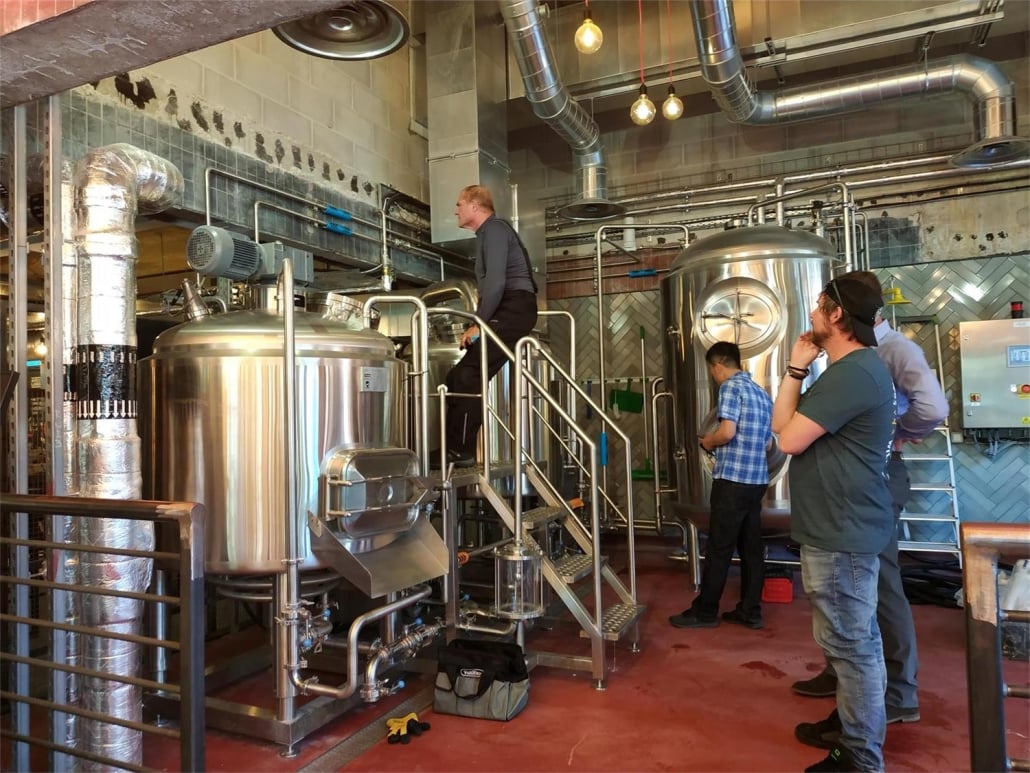
FAQ
| Question | Answer |
|---|---|
| What size fermentation tank do I need? | It depends on your batch size. Homebrewers often use 5-10 gallons; commercial breweries use 3-60 bbl tanks. |
| Can I use a plastic tank for beer? | Yes, but stainless steel is better for long-term use due to durability and sanitation. |
| How long does fermentation take? | Beer: 1-3 weeks. Wine: 1-4 weeks. Kombucha: 7-14 days. Time varies by product and temperature. |
| Do I need a temperature-controlled tank? | For most fermentations, yes—especially beer and wine. Stable temps = better quality. |
| What’s the difference between a fermenter and a brite tank? | A fermenter is for active fermentation; a brite tank is for carbonation and clarity before packaging. |
| Can I ferment under pressure? | Yes, in pressurized tanks. This can improve flavor and carbonation efficiency. |
| How often should I clean my fermentation tank? | After every batch and sanitize before every use. Deep clean monthly if in regular use. |
Additional FAQs About Fermentation Tanks
1) What interior surface finish (Ra) is recommended for sanitary Fermentation Tanks?
- Aim for ≤0.8 μm Ra (32 μin) or better. Smoother finishes reduce biofilm risk and improve cleanability, especially around welds and ports.
2) How do I size the glycol load for multiple jacketed Fermentation Tanks?
- Budget roughly 1–1.5 refrigeration tons per actively fermenting 7–15 bbl tank. Account for simultaneous crash cooling. Consult chiller vendors with ambient and target pull-down rates.
3) When should I choose a unitank instead of a dedicated fermenter plus brite?
- Choose unitanks if you need flexibility, reduced transfers/O2 pickup, and smaller footprints. Dedicated brite tanks still win for high-throughput packaging and lagering capacity.
4) Do pressure-capable tanks improve beer stability?
- Yes. Fermenting and transferring under pressure limits oxygen ingress and can improve flavor stability and foam; verify PRV rating (commonly 15–30 psi) and add a spunding valve for control.
5) What are common CIP validation checks for Fermentation Tanks?
- Verify spray device flow/pressure at the head, use conductivity or titration for chemical strength, log solution temperature/time, and perform periodic ATP/microbial swabs on hard-to-clean areas.
2025 Industry Trends in Fermentation Tanks
- Pressure-ready unitanks down-market: More small breweries adopt 15–30 psi unitanks for closed transfers and natural carbonation.
- Oxygen management by design: Standardization of DO sampling ports, pressure-rated sight glasses, and closed hop/fruit dosing accessories.
- Energy-aware jackets and insulation: Multi-zone jackets plus thicker insulation reduce chiller cycling and speed crash cools.
- Hygienic fabrication standards: Orbital welds with documented passivation and Ra ≤0.8 μm increasingly specified in RFQs.
- Inline analytics adoption: DO, turbidity, and density meters integrated at knockout and brite for real-time QC.
2025 Benchmarks and Cost Snapshot (North America/EU)
| Metric | 2023 Avg | 2024 Avg | 2025 YTD | Notes/Sources |
|---|---|---|---|---|
| 7–14 gal pressure-capable conical | $500–$1,100 | $480–$1,050 | $450–$1,000 | Home/nano unitanks |
| 3–7 bbl jacketed unitank (15–30 psi) | $8k–$14k | $7.5k–$13.5k | $7k–$13k | Ex-works, options vary |
| 10–20 bbl jacketed unitank | $14k–$28k | $13k–$26k | $12k–$25k | Ports/finish impact price |
| Typical interior finish (Ra) | 0.8–1.2 μm | 0.6–0.9 μm | 0.5–0.8 μm | Hygienic trend |
| Inline DO port adoption on FVs (%) | 31 | 38 | 47 | BA/MBAA + OEM surveys |
| Crash time 20°C→2°C (10–20 bbl) | 24–36 h | 20–30 h | 18–28 h | Improved insulation/jackets |
Authoritative sources:
- Brewers Association (quality, sustainability, benchmarking): https://www.brewersassociation.org/
- Master Brewers Association Technical Quarterly: https://www.mbaa.com/publications/tq/Pages/default.aspx
- EHEDG hygienic design guidance: https://www.ehedg.org/
- IBD Knowledge Centre: https://www.ibd.org.uk/
Latest Research Cases
Case Study 1: Switching to Unitanks to Reduce Oxygen Pickup (2025)
Background: A 6,000 bbl/year brewery had elevated package TPO linked to transfers from fermenter to brite.
Solution: Deployed 15–30 psi jacketed unitanks with spunding valves, added DO ports, and implemented closed transfers/dry-hop dosing.
Results: Package TPO decreased 28–40%; shelf-life sensory pass rate improved by 35%; reduced transfer labor by ~30 minutes per batch. References: BA oxygen control guidance; MBAA TQ articles on closed processing.
Case Study 2: CIP Validation and Spray Device Right-Sizing (2024)
Background: Intermittent micro positives after fruit additions in cylindroconical Fermentation Tanks.
Solution: Validated spray ball flow/pressure, upgraded to rotary spray devices, implemented conductivity-controlled caustic and documented passivation after weld repairs.
Results: Zero environmental positives over 120 days; CIP time reduced 18%; chemical usage cut 15%. Sources: MBAA TQ CIP validation; OEM spray device specifications.
Expert Opinions
- Mary Pellettieri, Quality Consultant and Author
Viewpoint: “Fermentation Tanks must be specified for QC—aseptic sample valve, DO port, and verifiable cleanability—then backed by calibration and SOP discipline.” - Dr. Charlie Bamforth, Brewing Scientist
Viewpoint: “Control oxygen and temperature, and most other quality attributes will fall into place. Pressure-capable unitanks make that control repeatable.” - John Mallett, Brewing Operations Leader and Author
Viewpoint: “The welds and gaskets you don’t see are the ones that cost you. Hygienic design and proper CIP hydraulics prevent expensive downtime.”
Practical Tools and Resources
- Brewers Association: Fermentation QA checklists, oxygen management, sustainability tools — https://www.brewersassociation.org/
- MBAA Technical Quarterly: Tank design, CIP validation, inline analytics — https://www.mbaa.com/publications/tq/Pages/default.aspx
- EHEDG: Hygienic equipment design and fabrication guidance — https://www.ehedg.org/
- IBD: Fermentation and vessel operations training — https://www.ibd.org.uk/
- Instrumentation vendors: Anton Paar (DO/CO2/density) — https://www.anton-paar.com/; Hach (DO meters) — https://www.hach.com/
- Community/marketplace: ProBrewer classifieds & forums — https://www.probrewer.com/
Last updated: 2025-09-28
Changelog: Added 5 targeted FAQs; 2025 trend and benchmark table; two recent case studies; expert viewpoints; curated tools/resources with authoritative links for Fermentation Tanks
Next review date & triggers: 2026-03-31 or earlier if tank pricing shifts >10%, BA/MBAA publish new oxygen/CIP guidance, or hygienic finish standards change
Share this entry
Interested in learning more about Brewing Systems including additional details and pricing information? Please use the form below to contact us!
YOLONG BREWERY EQUIPMENT FAQS
- Commercial Brewery / Craft Brewery / Microbrewery / Nanobrewery
- What is The Difference Between Craft Beer and Industrial Beer?
- The Bespoke Differences In Custom Brewing Systems
- Everything You Need to Know About Kettle Souring
- How to Choose Brewing Equipment for Your business?
- How To Choose The-Best Partner To Build Your Commercial Microbrewing System?
- Two Detection Sensors That You Need To Use In Your Brewhouse System
- Remote Control Applications in Brewing Equipment/How does it work?
- How To Clean Your Brand New Brewery Tanks?

